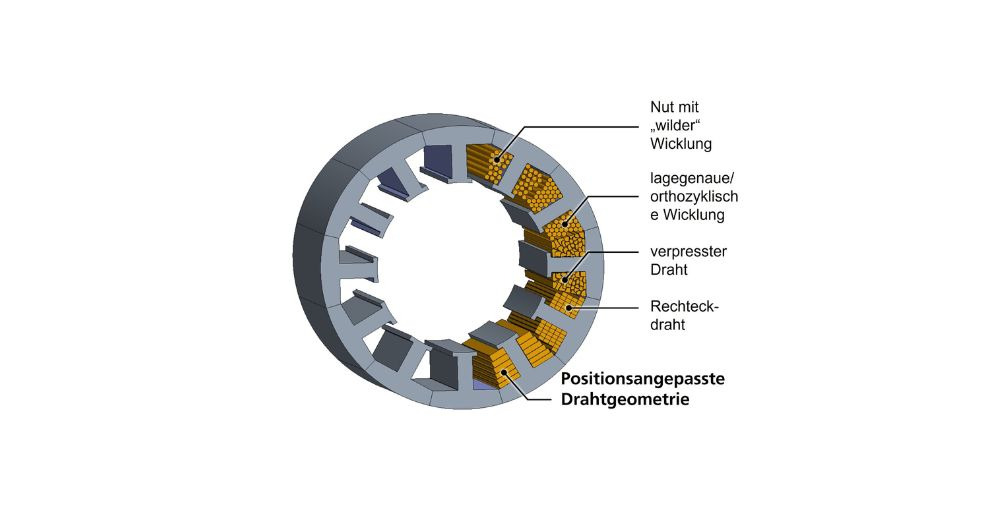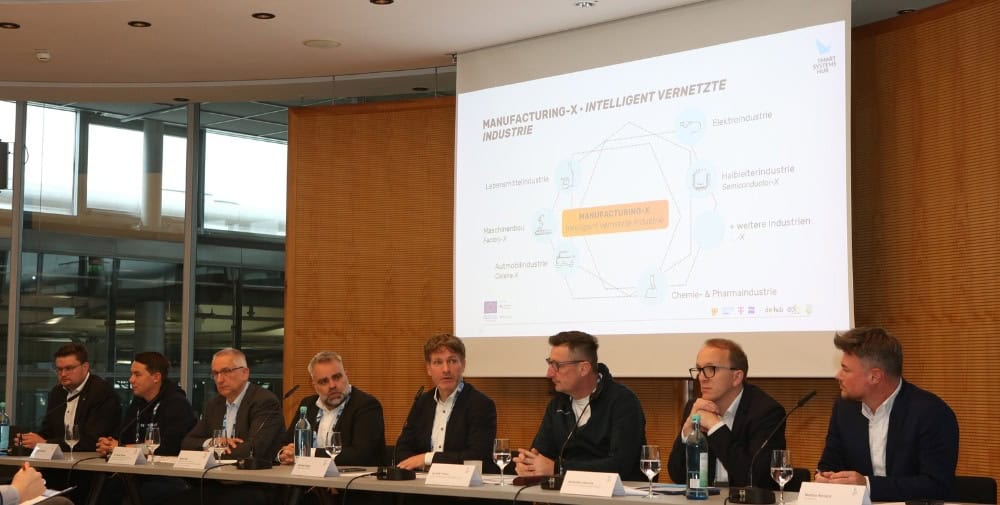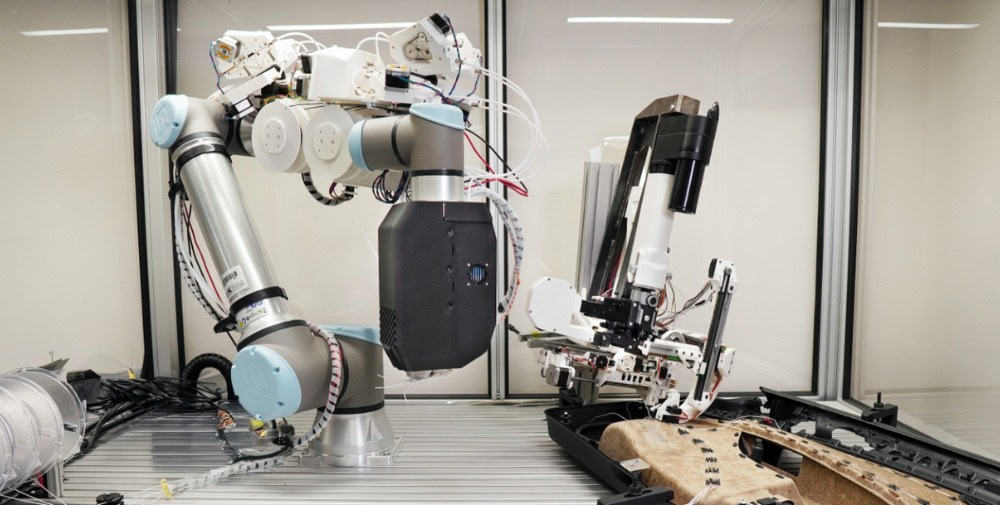
The automotive industry usually relies on the so-called permanently excited synchronous motor for electric drives. This consists of the essential components stator and rotor. The rotor is the rotating inner part of the motor, which contains a set of permanent-magnet poles that interact with the magnetic field of the stator. The stator is the stationary outer part of the motor, which contains a set of coils that are supplied with electric current to generate an alternating magnetic field. As a result, the rotor rotates at a certain speed, depending in particular on the intensity and frequency of the magnetic field.
The use of concentrated windings, also known as toothed coils, is particularly suitable for the simple construction of a stator while at the same time making targeted use of materials. Here, the coils of copper wire each wrap around one tooth of the stator. Due to the circular outer geometry of the stator, trapezoidal grooves are formed between the teeth. However, according to the current state of the art, automated winding processes with round wire can usually only fill about half of these grooves. Grooves filled to more than 80 percent would further improve the efficiency and power output of the motor due to lower electrical resistance, better current flow and resulting higher magnetic field strength; alternatively, a motor could be dimensioned smaller for the same power output, and the weight and required installation space would be reduced.
The Fraunhofer IWU is researching forming process chains for the production of electromagnetic tooth coils in order to increase the groove filling factor. The special feature here is that, depending on the position within the slots, the wire is to be designed geometrically in such a way that the space available at the respective position is filled in the best possible way (position-adapted winding geometry). For example, at the level of the wider base side in the trapezoidal groove, a flat and wide design of the winding makes sense, while on the short base side a narrow wire geometry stands for the best possible utilization of space. The conductivity of the wire in the respective geometry must also be taken into account.
For the production of such a winding, in which the wire and windings require different geometries depending on their position, Fraunhofer IWU relies on forming technology, as this approach has a number of advantages. During production, the material is utilized in the best possible way, and there is no waste material that would have to be recycled. Compared to additive manufacturing processes, for example, the energy required for production is low; simple tools are all that is needed to produce high volumes in short cycle times and thus ensure economical manufacturing.
Further links
www.iwu.fraunhofer.de
Photo: Fraunhofer IWU




